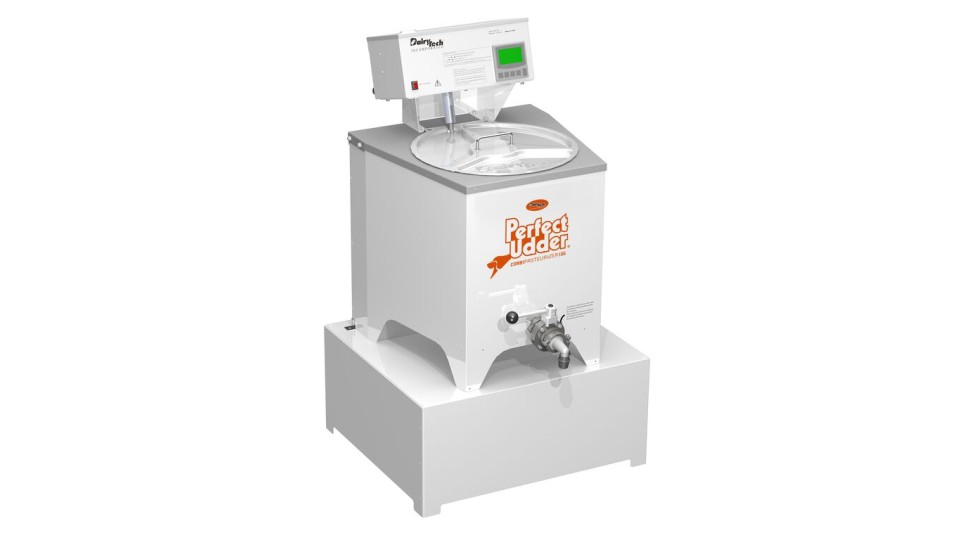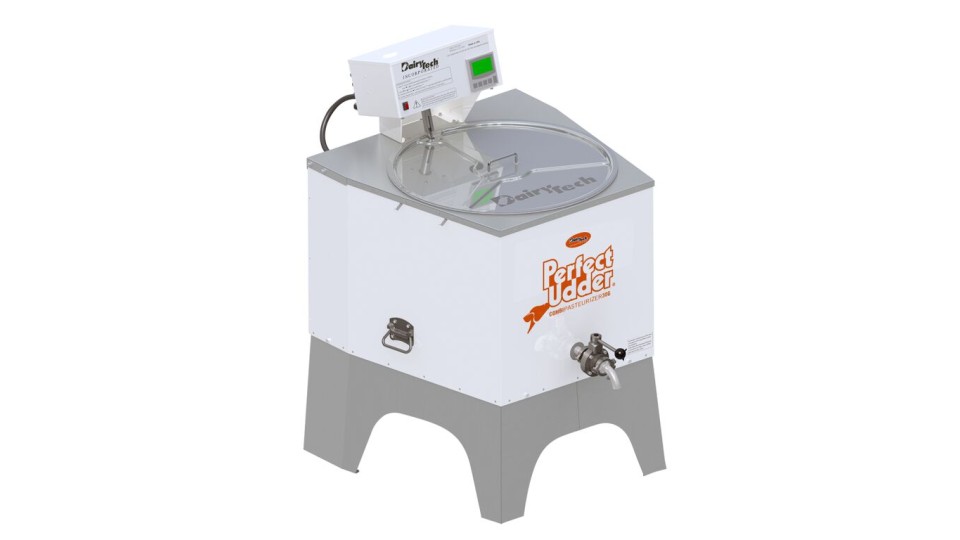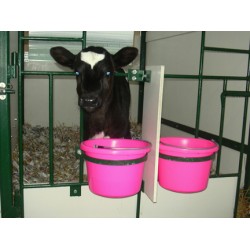The objective of this randomised clinical trial was to describe the effect on colostrum characteristics and passive transfer of IgG in neonatal calves when using the Perfect Udder colostrum management system (single-aliquot treatment; Dairy Tech Inc., Greeley, CO) compared with a negative control (fresh refrigerated or fresh frozen colostrum) and a positive control (batch heat-treated colostrum). First-milking Jersey colostrum was pooled to achieve 31 unique batches with a minimum of 22.8 L per batch. The batch was then divided into 4 with 3.8 L allocated to each treatment group: (1) heat-treated in Perfect Udder bag at 60°C for 60 min and then stored at −20°C (PU); (2) heat-treated in a batch pasteurizer (Dairy Tech Inc.) at 60°C for 60 min and then stored at −20°C in Perfect Udder bag (DTB; positive control); (3) fresh frozen colostrum stored at −20°C in Perfect Udder bag (FF; negative control); and (4) fresh refrigerated colostrum stored at 4°C in Perfect Udder bag (FR; negative control).
Colostrum from all treatments was sampled for analysis of IgG concentration and bacterial culture immediately after batch assembly, after processing, and before feeding. Newborn Jersey calves were randomly assigned to be fed 3.8 L of colostrum from 1 of the 4 treatment groups. A prefeeding, 0-h blood sample was collected, calves were fed by esophageal tube within 2 h of birth, and then a 24-h post feeding blood sample was collected. Paired serum samples from 0- and 24-h blood samples were analyzed for IgG concentration (mg/mL) using radial immunodiffusion analysis. The overall mean IgG concentration in colostrum was 77.9 g/L and was not affected by treatment. Prefeeding total plate counts (log10 cfu/mL) were significantly different for all 4 treatments and were lower for heat-treated colostrum (PU = 4.23, DTB = 3.63) compared with fresh colostrum (FF = 5.68, FR = 6.53).
Total coliform counts (log10 cfu/mL) were also significantly different for all 4 treatments and were lower for heat-treated colostrum (PU = 0.45, DTB = 1.08) compared with fresh colostrum (FF = 3.82, FR = 4.80). Mean 24-h serum IgG concentrations were significantly higher for calves in the PU (41.0 mg/mL) and DTB (40.6 mg/mL) groups compared with FF (35.1 mg/mL) and FR (35.5 mg/mL) groups. Mean apparent efficiency of absorption of IgG was significantly higher for the PU (37%) and DTB (37%) groups compared with the FF (32%) and FR (32%) groups. Calves fed heat-treated colostrum (PU or DTB) experienced significantly improved AEA and serum IgG concentrations.
Full Article can be read at:-
http://www.journalofdairyscience.org/article/S0022-0302(15)00018-1/fulltext
Pasteurising colostrum is part of a Johnes Disease control program. We are the UK dealers for Dairytech pasteurisers & Due Ci inox pasteurisers and the Perfect Udder colostrum management system







